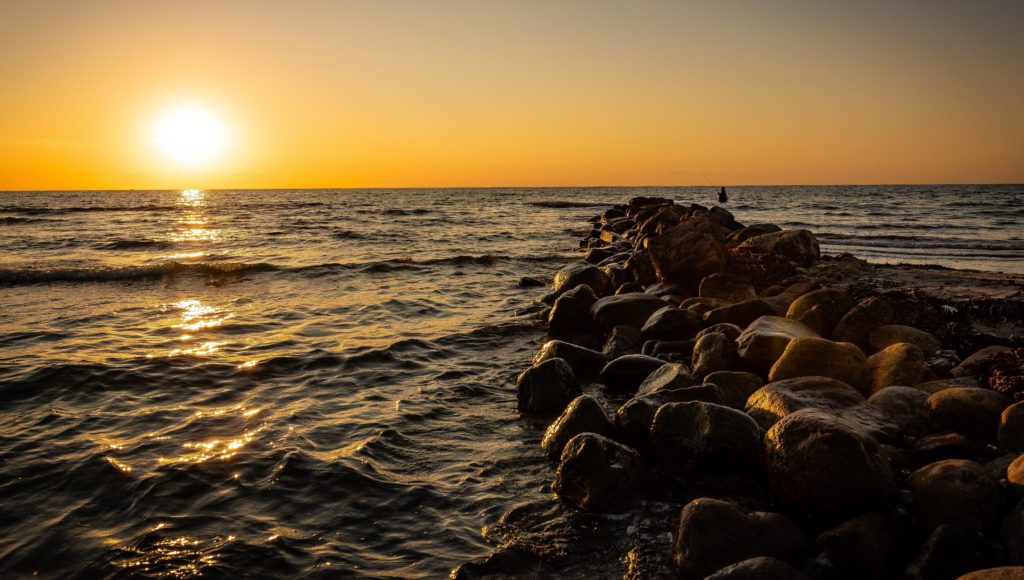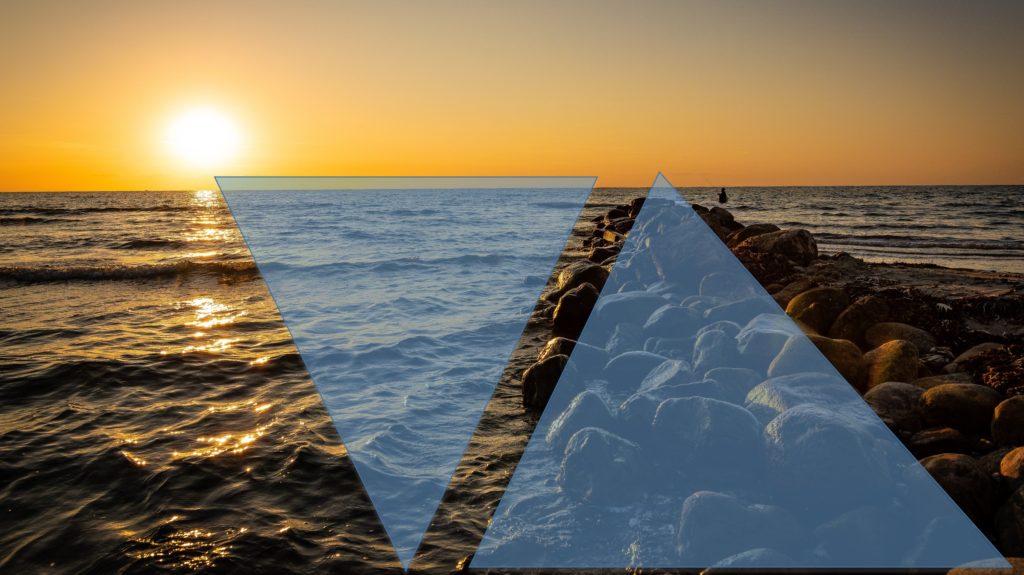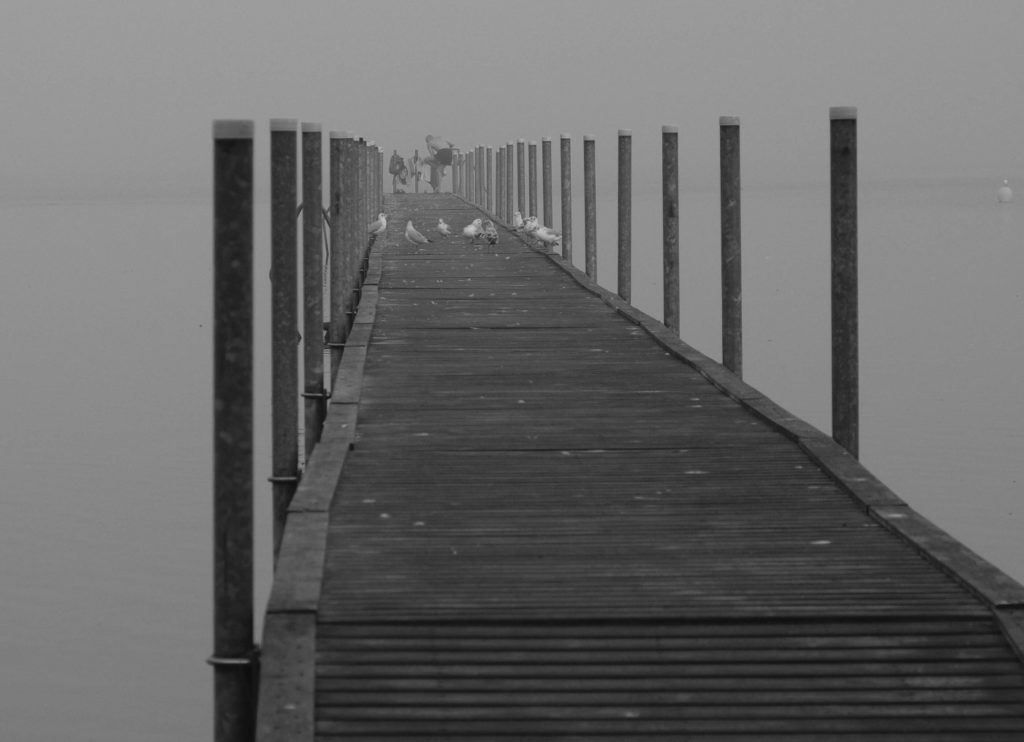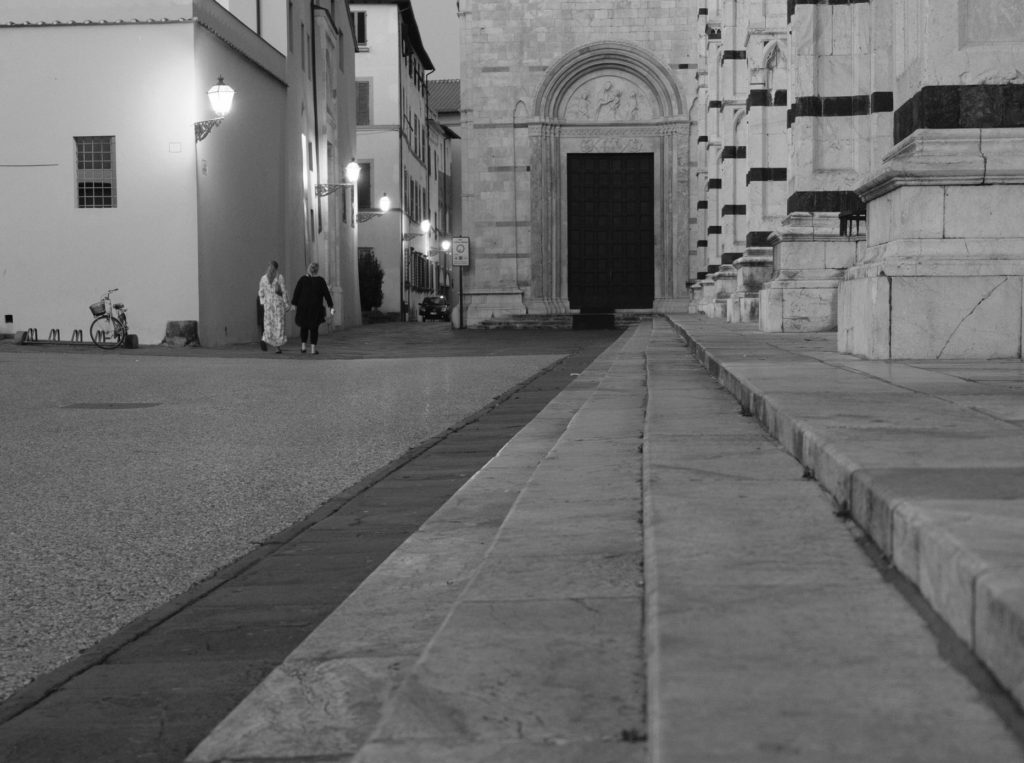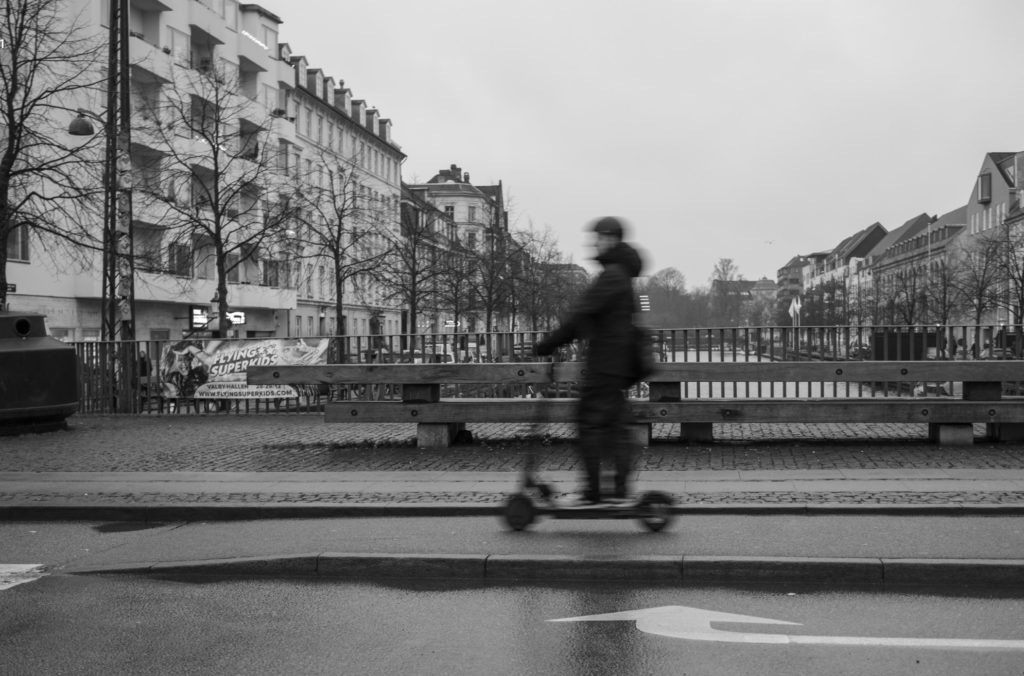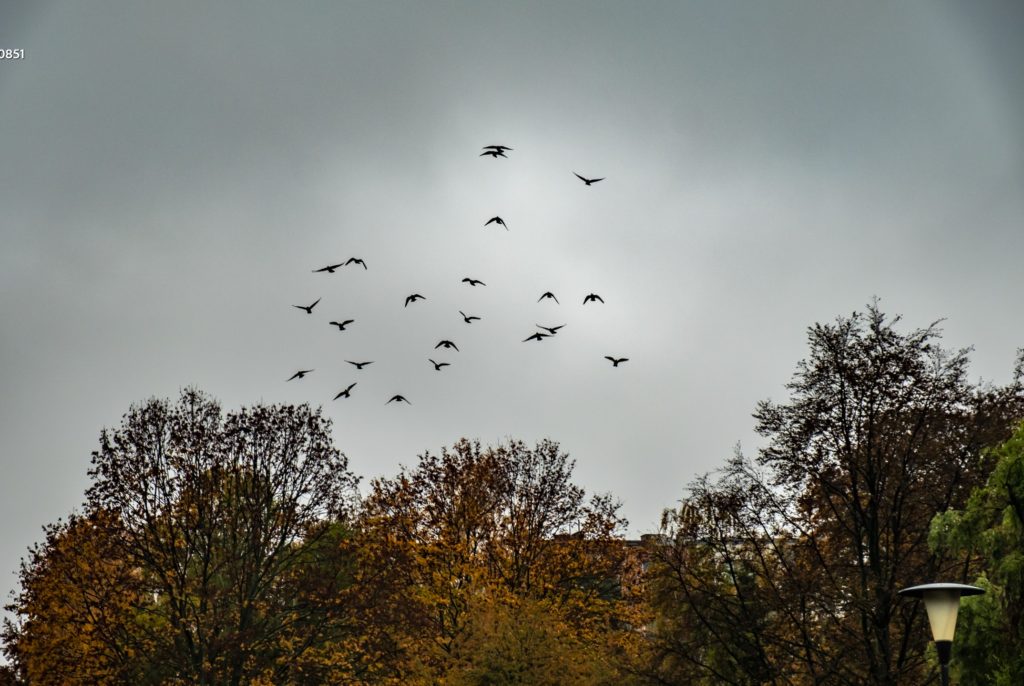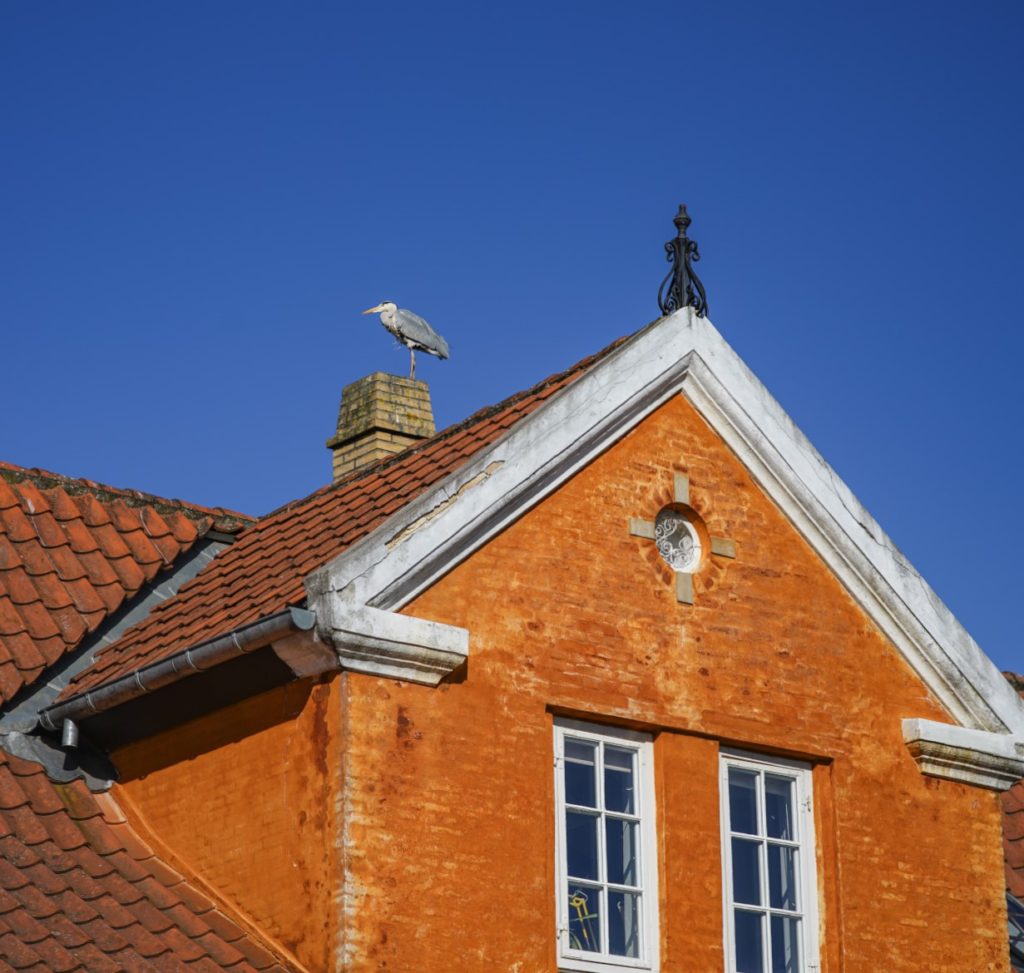Triangles
I must admit that I don’t really know why triangles are such a universal shape – maybe because it reminds us of a mountain or the shape of a pine tree? I have absolutely no clue, but the effect of using triangles in photography is often more order, structure and interest, that helps both obtaining the viewers interest but also help decode the message.
You can go a little nuts when you start to notice triangles in your photo work – both explicit triangles like a mountain or implicit triangles created by the relationship between objects in the frame. As with any new photography skill there is the risk that you use it too much, i.e. when you have a hammer, then everything becomes a nail. Over time you will however incorporate your awareness of triangles as any other composition skill, e.g. leading lines or the rule of thirds.
Take a look at this sunset for example. Notice any triangles?
I’m sure you did. In the image below I have marked a few, but there is also a triangle top right where the fisherman is standing; a triangle made up of the horizon, the right edge of the frame and the stone pier. Some of the waves also make up triangles if you look carefully, etc. As I said, when you got a good new hammer, everything becomes a nail.
Infinity views often gives naturally created triangles, like a road that disappears in the distance or as in the example below, a long pier.
Especially roads, streets and buildings can create triangles of interest – in the image below I shot from a relatively low position, which underlines the triangles created by the staircase.
You can use triangles to almost point to your subject as in the example below where the building both left and right create triangles that seem to point to the subject a create an area of interest – helped by the big arrow in the bottom of the frame!
Triangles can also be less explicit and more implied, like the triangle created by the birds and the trees together, pointing in the direction the birds are moving and hence emphasizing the action.
In the example below, I have stopped counting the number of triangles! The framing and the lines crossing creates more interest to the iconic Berlin tower than had I just shot the tower stand alone.
Buildings often hold many triangles that you can use for interesting angles and cropping – the example below is perhaps not brilliant, but illustrates the point.
Triangles can also be used to stand out in a universe of circles or squares – in the image below from Louisiana Museum of Modern Art north of Copenhagen, then legs of the Giacometti shape makes a triangle that stands out relative to all the squares created by the window and the shades cast by the same. Also notice the implied triangle created by the tiles in the floor, pointing towards a single point to infinity.
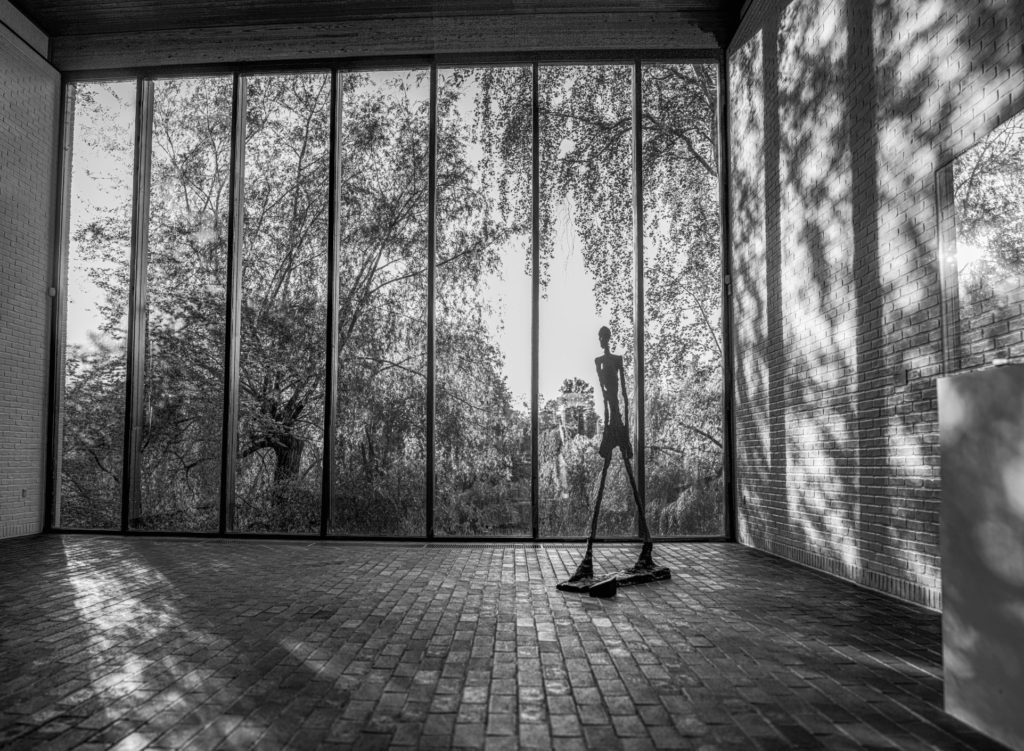 I hope the above served as inspiration for your composition work, both in general and when it comes to triangles specifically. If triangles in a composition is new to you, it is only natural that you in the beginning see triangles everywhere! Don’t worry, it will fade and afterwards just be another tool in your photography toolbox.
I hope the above served as inspiration for your composition work, both in general and when it comes to triangles specifically. If triangles in a composition is new to you, it is only natural that you in the beginning see triangles everywhere! Don’t worry, it will fade and afterwards just be another tool in your photography toolbox.

